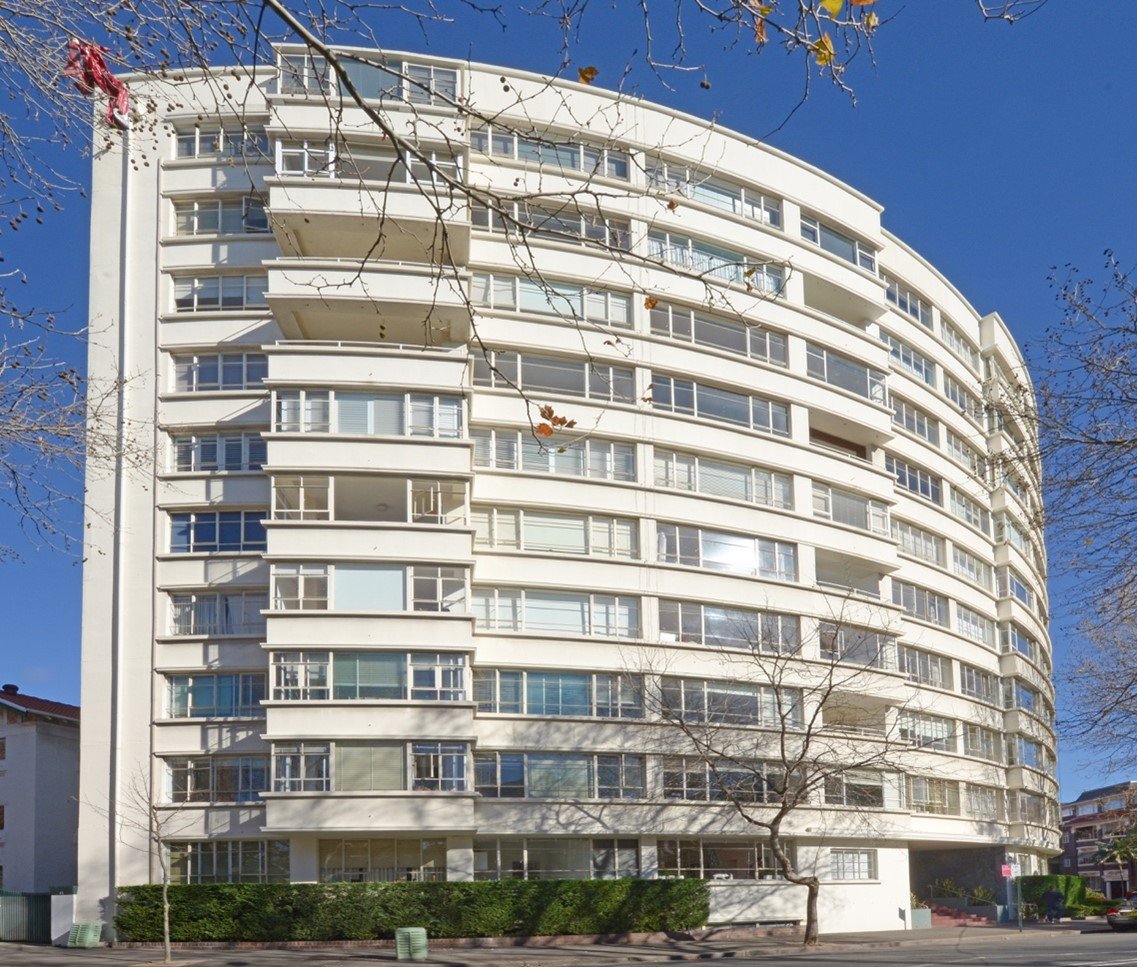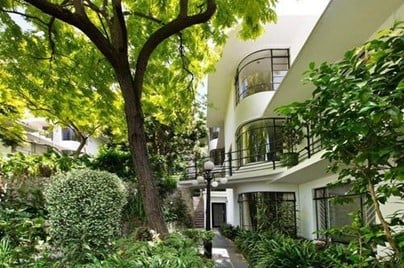20th-century buildings throughout Potts Point, Elizabeth Bay and Rushcutters Bay are the latest places to join the National Trust (NSW) register, reflecting the interesting range of heritage sites across New South Wales.
By Charlotte Anlezark, National Trust Conservation Officer
Since 1946 the National Trust has prepared over 12,000 heritage listings. Every year buildings, landscapes, cemeteries, and culturally significant sites are added to our register. The aim is to protect special historic places from a range of threats, such as demolition, neglect, and overdevelopment.
The National Trust has been working with the Potts Point Preservation Group (PPPG) to list many of the 20th century buildings throughout Potts Point, Elizabeth Bay and Rushcutters Bay. These include some of the state’s earliest apartment art Deco buildings and Modern apartment blocks. The PPPG was established to help protect the incredible mix of high-density heritage architecture in the area that allows for a diverse community, helping to create a vibrant, thriving precinct. You can read more about the PPPG on their website. We note that the City of Sydney also recently investigated the heritage value of a number of Modern apartment buildings throughout this area, with many recommended for heritage listing. We commend the City of Sydney for this important work.
Read more about a few of the Modern buildings the PPPG have helped to recently list on the National Trust register.
St Ursula, Elizabeth Bay
St Ursula is the first of seven apartment buildings in the Potts Point area designed by émigré architect Hugo Stossel. Stossel’s early work in Australia largely involved government projects, before registering as an architect in NSW in 1947 and beginning his own practice. Stossel’s early post-war projects largely included modernist houses and later apartment buildings. His European style was influential in Sydney’s mid-century architectural landscape.

St Ursula was built in 1951 and is a curved seven-storey apartment block that sits prominently along the round of Onslow Place. Each floor was designed with two two-bedroom apartments, the top level a penthouse with a large terrace. St Ursula was constructed of brick-faced steel-framed reinforced concrete, exposed beams all-steel window frames and floor to ceiling glass walls, an ultra-modern style that made the most of sweeping views across the harbour.
17 Wylde Street, Potts Point
17 Wylde Street is another important Modern apartment building that reflects the European influence of émigré architects, having been designed by Stossel’s contemporary Aaron Bolot. Another curved building, number 17 is an excellent example of the transition from Functionalist streamlined inter-war Art Deco designs to the post-war Modernist or International style apartment buildings.
The building features a white curved horizontal banded façade and segmented radial planning, creating a face that hugs the rounding corner from Macleay into Wylde Street. The sweeping plate glass glazing frames panoramic views to Sydney harbour for the 38 units housed within the building. 17 Wylde Street is also significant as an early example of co-operative title for owner occupancy in Australia.

Wyldefel Gardens, Potts Point
Designed for the owner and art collector William A Crowle by architect John Brogan, Wlydefel Gardens consists of a stepped U-shaped form inspired by terraced housing in the Barvarian Mountains. Completed in 1936, Brogan designed the complex in a Functionalist Art Deco or Continental Moderne Style, creating what was described as “the most modern building of its kind in Australia”.
The units cascade down the sloping block toward the harbour as two storey platforms. Each apartment contains a garden terrace which forms the roof of the home below. Consisting of curved glass windows, glass blocks and white rendered walls, it is a fine example of early 20th century European influence on Australian design, as well as an exemplar for integrated indoor/outdoor and garden style living.

What is the National Trust Register?
The National Trust maintains a register of landscapes, townscapes, buildings, industrial sites, cemeteries and other items or places which we determine to have cultural significance and are worthy of conservation.
While the National Trust Register has no legal force, it is regarded as an authoritative statement on the heritage significance of a place, and serves as an early, non-statutory warning that it should be conserved. Often a listing can lead to legislated heritage protection by gathering important evidence for the historical record, which is ready to hand when challenges arise. Find out more about the National Trust Register.
Is your property eligible for listing?
If you would like to research a listed property, help update the information for your property, or suggest a property for future listing, contact the National Trust’s advocacy team at advocacy@nationaltrust.com.au
If you’d like to stay up-to-date on the latest National Trust (NSW) news, events and special offers, subscribe to our free monthly newsletter.

 Twitter
Twitter Facebook
Facebook Linkedin
Linkedin Email
Email
Another superb story. I love Art Deco in all its forms and love to see more articles about this period in Australian landscape. Would also like to know more about where to see more whether it be on social media or clubs. Any advise ?
Again thank you.
Robin